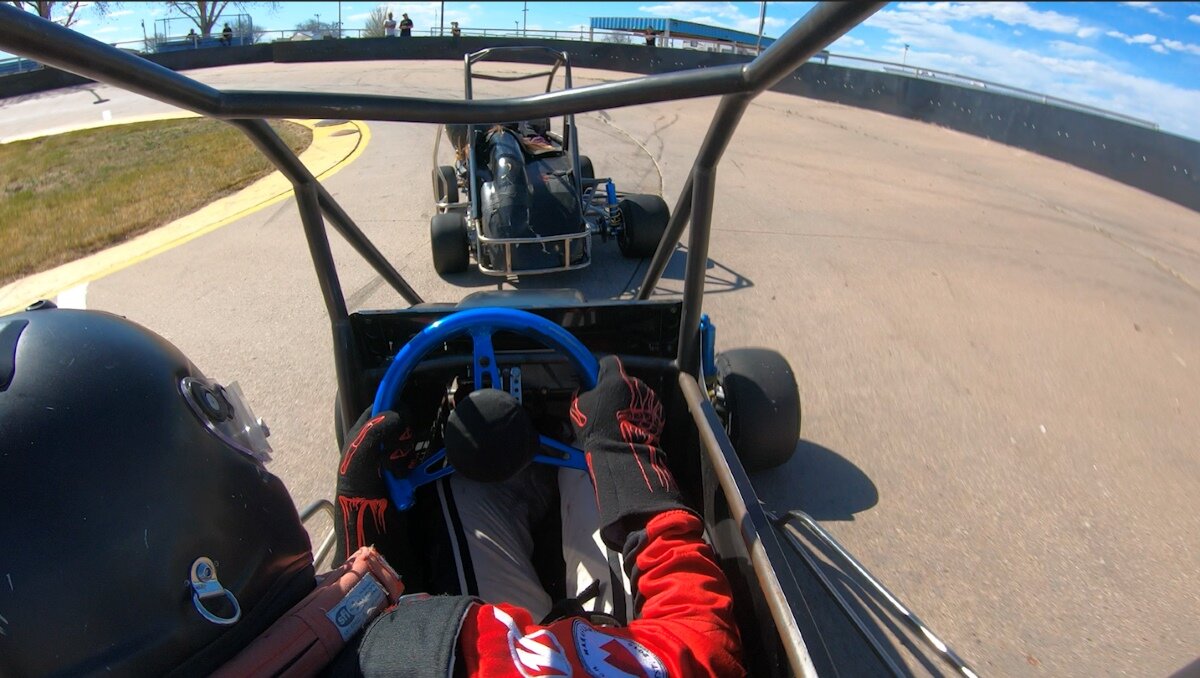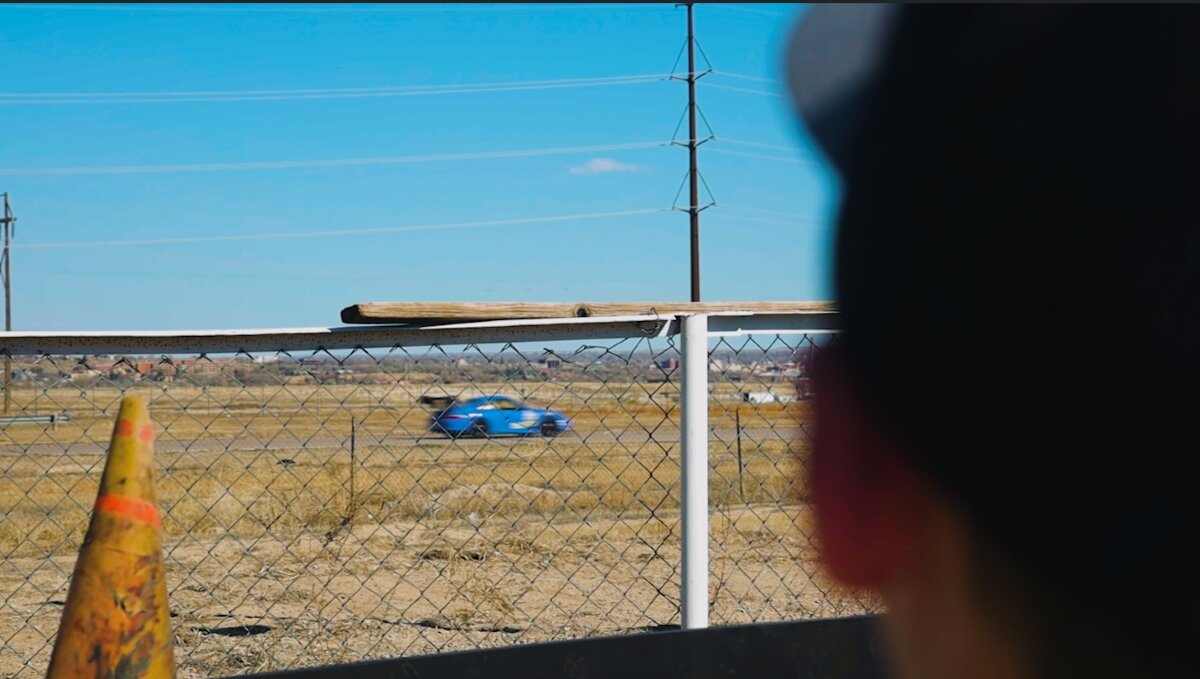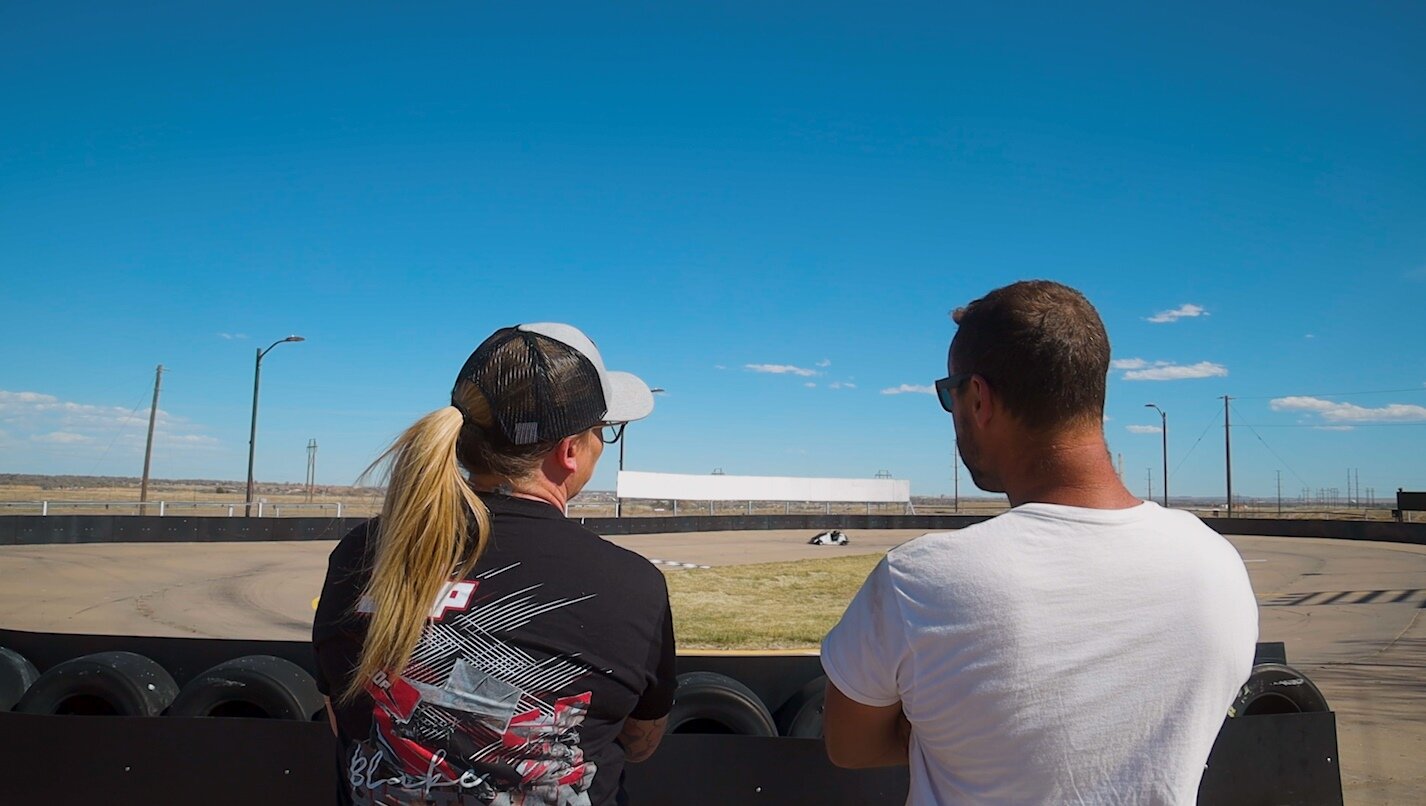Fast, furious and 5 years old: NASCAR’s next generation is Colorado’s quarter midget racers

PUEBLO, Colo. — Some race car drivers live by the motto, “If you ain’t first, you’re last.”
But Colorado’s quarter midget racers drive with higher morals in mind, like respect for competition, developing safe and strategic driving skills and training towards making the big time.
However, racers like Blake Pittman are no stranger to the podium. The nine year old has taken home three championship wins in the SCS (Southern Colorado Series), which takes place between the Colorado Springs and Pueblo Quarter Midget Associations.
Blake Pittman is a quarter midget racer (the name for young go-kart-like racecar drivers between the ages of five and sixteen) driving within the Southern Colorado Quarter Midget Association (SCQMA), one of three Colorado quarter midget associations growing the next generation of NASCAR drivers.
“It’s definitely a way to get them comfortable with race cars,” said Christine Pittman, the president of SCQMA.
Pittman is also Blake’s mother, and she and her husband help operate the quarter midget race track at the Honor Speedway in Pueblo.
“We started out both of our kids at four-and-a-half, and we both run the track here now,” said Pittman. “So we are a committed race car family.”
The Pittmans are one of thousands of families that participate in quarter midget racing in North America. According to Quarter Midgets of America, there are about 50 Quarter Midget clubs spread across 13 regions (though some report there being upwards of 70), stretching from the Little Wheels Quarter Midget Association in Graham, Washington, to the Langley Quarter Midget Association in Langley, B.C., Canada.

Blake (center) trains with the help of his father (left) at Pueblo’s Honor Speedway.
Photo: Chase McCleary, Rocky Mountain PBS
There are mixed accounts of the sport’s origins. Some trace quarter midget racing back to the 1930s when a father in a small California town engineered a car for his son using a wooden box, four small wheels and an old lawn mower engine.
Others date it to 1954, when one of the sport’s first racers, Doug Schiller, inspired a group of Mineola, New York parents to build a parking lot racing oval.
And the name? It refers to the size of the cars, described as a quarter of the size of the larger midget cars.
Today, quarter midget cars are far more complex — and far more powerful — than a wooden box on wheels. Modern racers rev single cylinder engines, often manufactured by Honda or Deco. A used car goes for about $1,000 to $3,000 on average, though newer vehicles can run as high as $5000, according to the NWOQRMA out of Ohio.
The rapid speeds of the cars, matched with young drivers’ still-developing motor skills, places racers at the risk of injury, including brain and spinal cord injuries, according to some reports.
Both national and regional level racing associations stress their commitment to safety, ranging from mandatory car safety inspections to required Rookie Level training before competition.

Blake (driver) positions himself to pull ahead of the car in front of him.
Photo: Chase McCleary, Rocky Mountain PBS
Drivers ride within a sturdy chassis, usually constructed of fiberglass or aluminum bars. These are manufactured by specialized individuals or firms spread across the country, and drivers looking for the best often need to travel — sometimes to other states — to find them.
Fortunately, the Pittman’s have a connection in Colorado.
“There’s… probably seven to ten different chassis builders out there that take care of getting your cars ready,” said Pittman. “We run locally, so it definitely helps having a chassis builder in our backyard.”
Pittman emphasized vehicle safety requirements as well. Every car includes seat belts, arm restraints and padded interior linings. All drivers wear fireproof suits, helmets and gloves, as well as neck braces for additional support.
“We’re not just hoping for the best out there. All the way from fireproof shoes up to helmets… [drivers] are well taken care of,” said Pittman.
Racers zip around circular tracks typically measuring about 1/20 of a mile. Lap times average out at about six seconds per lap, with drivers typically reaching between 30 to 35 miles per hour.
Junior division racers, the youngest age group in quarter midget racing competition, are technically eligible starting from age five. Those anxious to start can get their wheels on the asphalt a half-year earlier through “Novice Training.”
Regardless of age, all racers must first participate in the Rookie Class to be eligible for competition. After getting their bearings, drivers either enter the Junior Division (ages five to nine) or the Senior Division (ages nine to 16).
At age nine, Blake has been driving for more than five years. Yet, he has remained humble about his abilities.
“You learn more the more you race,” said Blake. “I’m still learning stuff.”
Top drivers like Blake will travel across the country to compete in national tournaments. He recently returned from races in Las Vegas and has traveled from California to Illinois throughout his career.
Those driving in Colorado can join one of three different clubs: the Southern Colorado Quarter Midget Association (SCQMA, based in Pueblo), the Pikes Peak Quarter Midget Association (PPQMA, based in Colorado Springs) or Rocky Mountain Quarter Midget Association (RMQMA, based in Denver).
Participants pay dues to access the racetrack, usually coming to about $100 per family. The SCQMA also offers “Try and Like it” sessions, where prospective racers can pay $20 to test out their driving abilities.
Together, these form the Front Range Series, a series of six races between May and August that are open to competitors from anywhere in the country.
Colorado Springs and Pueblo also compete in the Southern Colorado Series (SCS), a series of 13 races that alternate between the Pueblo and Colorado Springs race tracks.

Blake (right) hopes to one day graduate to racing full size stock cars.
Photo: Chase McCleary, Rocky Mountain PBS
The sport’s growing popularity in Colorado caught the attention of NASCAR, which officially sanctioned the Front Range series a couple of years ago. This brought more attention — and soon, more drivers — to the Rocky Mountain region.
“It’s the NASCAR Youth Series, and they run races all over the United States,” said Pittman. “We’re actually hosting one this year in Colorado Springs, and at those national races, there’s anywhere from three to 400 cars battling it out.”
Pittman noted that quarter midget racing has historically been a sort of pipeline for professional drivers. Hall of Fame NASCAR stock car racer Jeff Gordon started in quarter midget racing, and the alumni list includes professionals such as Jason Leffler, Mike Bliss and Ryan Newman, among many others.
Blake hopes his racing career will also extend beyond the quarter midget track.
“Full size sprint cars is my goal right now,” said Blake. “My goal is to just get to a bigger car.”
Pittman admits that she was pretty nervous watching her kids first start racing.
“I used to get mild heart palpitations when they’d go out when they were younger,” said Pittman. “I think I get more nervous than they do sometimes.”
However, she has grown more comfortable over time, and Pittman plans on continuing to support her two racers as a pit mom from the sidelines.
Beyond the track, Pittman enjoys the relationships they have formed within the quarter midget racing community.
“It’s a family event no matter where you’re at. We travel with a lot of family and friends throughout the year, and it just makes it that much better to have a family impact for our kids,” said Pittman.
“They have an extended family now.”

Christine (left) and Anthony Maloney (right) watch Maloney’s five-year-old niece taking to the track for the first time.
Photo: Chase McCleary, Rocky Mountain PBS
Chase McCleary is a multimedia journalist at Rocky Mountain PBS. Chasemccleary@rmpbs.org
